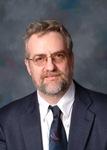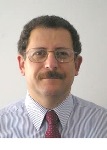Org. Synth. 2013, 90, 316-326
DOI: 10.15227/orgsyn.090.0316
Practical Synthesis of Di-tert-Butyl-Phosphinoferrocene
Submitted by Carl A. Busacca, Magnus C. Eriksson,
1 Nizar Haddad, Z. Steve Han, Jon C. Lorenz, Bo Qu, Xingzhong Zeng, and Chris H. Senanayake.
Checked by Corey M. Reeves and Brian M. Stoltz.
1. Procedure
Caution! tert-Butylithium is extremely pyrophoric and must not be allowed to come into contact with the atmosphere. This reagent should only be handled by individuals trained in its proper and safe use. It is recommended that transfers be carried out by using a 20-mL or smaller glass syringe filled to no more than 2/3 capacity, or by cannula. For a discussion of procedures for handling air-sensitive reagents, see Aldrich Technical Bulletin AL-134. [Note added August 2009]
Di-tert-butylphosphinoferrocene.An oven-dried 1000-mL four-necked (one 34/45 joint and three 24/40 joints) round-bottomed flask is allowed to cool in a desiccator over anhydrous calcium sulfate. Once cool, the central joint is equipped with an overhead mechanical stirrer, the glass rod of which is fitted with 7.2 x 2 cm Teflon paddle, coated with lubricant (Note 1) and sheathed by a 34/45 jointed glass stirrer bearing. The remaining three necks are fitted with a thermocouple in a 24/40 adapter, an argon line connected to a 24/40 adapter, and rubber septum. The rubber septum is removed from the fourth neck and the flask is charged with ferrocene (8.0 g, 43.0 mmol, 1 equiv) (Note 2). A 250-mL pressure-equalizing addition funnel with a 24/40 joint is fitted in the fourth neck and the reaction set-up is flushed with argon for 5 min (see Note 3 for an image of the reaction setup). The top of the addition funnel is sealed with a rubber septum and the entire set-up is maintained under a positive pressure of argon throughout the remaining operations. Tetrahydrofuran (480 mL) (Note 4) is added via cannula through the rubber septum and down through the addition funnel resulting in an orange solution that is stirred at room temperature. A solution of potassium tert-butoxide in tetrahydrofuran (1.0 M, 5.25 mL, 5.25 mmol, 0.12 equiv) (Note 5) is added to the flask through the rubber septum using a gastight syringe. The addition funnel is rinsed with tetrahydrofuran (20 mL) followed by pentane (10 mL) (Note 6). The reaction solution is cooled to about -73 °C by immersion of the flask in a dry ice-acetone bath. A solution of tert-Butyllithium (1.7 M, 49.6 mL, 84.3 mmol, 2.0 equiv) (Note 7) is added dropwise via the addition funnel over 10-15 min, keeping the internal temperature around -70 °C. The addition funnel is rinsed with pentane (10 mL) with a gastight syringe. A 2-3 °C exotherm is observed during the addition and an orange slurry forms toward the end or shortly after completion of the addition. The slurry is stirred at about -70 °C for 1 h and then the dry ice-acetone bath is replaced with an ice-water bath and the content of the flask is stirred and allowed to warm. Once the internal temperature reaches ca. 0 °C (Note 8), di-tert-butylchlorophosphine (8.8 mL, 46.3 mmol, 1.1 equiv) (Note 9) is charged to the addition funnel via a gastight syringe and added to the reaction mixture drop-wise over 2-3 min. The addition funnel is rinsed with tetrahydrofuran (10 mL). The ice/water bath is removed and the mixture is stirred at ambient temperature for 12 h. Reaction progress is monitored by TLC analysis (Note 10).
Tetrafluoroboric acid-diethyl ether complex (11.5 mL, 84.5 mmol, 2.0 equiv) (Note 11) is added at ambient temperature to the reaction mixture via gastight syringe through the septum over ca. 5 min. A slight exotherm (5-7 °C) is observed as the solution becomes turbid. A solid begins to precipitate within 0.5-1 h. The suspension is stirred at ambient temperature for 2 h to afford a red thin suspension (Note 12). Deionized water (100 mL) and methyl tert-butyl ether (100 mL) are added via syringe through the septum and the resulting turbid homogeneous two-layer solution is stirred for 30 min at ambient temperature. The mixture is then vacuum-filtered through a 1 cm pad of Celite (ca. 30 g) in a 300-mL fritted Büchner funnel with a vacuum pressure of ca. 15 mmHg. The filter pad is rinsed with tetrahydrofuran (40 mL) and the rinse combined with the filtrate. The filtrate is transferred to a flask and concentrated via rotary evaporation (Note 13) until all organics are removed and a red solid as a suspension in ca. 100 mL water is obtained. The suspension is stirred at ambient temperature for 1 h and vacuum-filtered using a 100-mL fritted Büchner funnel, fitted with a VWR brand No. 5 filter paper (55 mm), and with a vacuum pressure of ca. 15 mmHg. The filter cake is washed with water (40 mL) and dried on the frit for 1 h using house-vacuum to obtain the crude product as an orange solid (Note 14).
A 250-mL three-necked round-bottomed flask with 24/40 joints is equipped with a 5 cm magnetic stirbar, thermocouple in one neck, a 60 mL 24/40 joint pressure-equalizing addition funnel that is capped with a rubber septum in the center neck and an argon line connected to a 24/40 adapter in the third neck. The flask is charged with crude 1 and a 16-gauge needle is used to puncture the rubber septum attached to the addition funnel, allowing the flask to be flushed with argon for 5 min. Methyl tert-butyl ether (50 mL) is added via gastight syringe to the reaction flask via the addition funnel. The suspension is heated with stirring to 50-55 °C via an oil bath and, once the internal temperature reaches 50 °C, methanol (50 mL) is added via gastight syringe to the addition funnel and then to the mixture drop-wise over 5 min. The mixture is stirred at 50 °C for an additional 10-15 min to obtain a dark red solution. The solution is vacuum-filtered (with a vacuum pressure of ca. 15 mmHg) through a Büchner funnel with #1 filter paper into a pre-warmed 500-mL 24/40 joint round-bottomed flask (Note 15) that contains a 7 cm magnetic stirbar. The Büchner funnel is replaced with a 125 mL pressure-equalizing addition funnel that is charged with methyl tert-butyl ether (100 mL) and an argon line is attached to the top of the addition funnel. The methyl tert-butyl ether in the addition funnel is added dropwise over 5-10 min, which results in the formation of a slurry. The oil bath is removed and the slurry stirred at ambient temperature for 3 h. The slurry is filtered on a Büchner medium-fritted funnel and the cake is washed with tert-Butyl methyl ether (40 mL). The filter cake is dried using house-vacuum to obtain 1 (11.0 g, 61%) as a light orange solid (Notes 16).
2. Notes
1. 'Stir-Lube' is obtained from Ace Glass (Trubore stirrer lubricant, product number 811710).
2.
Ferrocene was purchased from Aldrich (98%) and used as received.
5.
Potassium tert-butoxide as a 1.0 M solution in
tetrahydrofuran was purchased from Aldrich and used as received. Fresh bottles of
potassium tert-butoxide solution gave superior results.
6. The purpose of the
pentane rinse is to remove
tetrahydrofuran from the addition funnel since
tert-Butyllithium reacts instantaneously with
tetrahydrofuran at room temperature.
7. The
tert-Butyllithium was purchased from Aldrich as a 1.7M solution in
pentane and used as received.
8. It takes about 5-10 minutes for the internal temperature to rise from -70 °C to ca. 0 °C.
9. The
di-tert-butylchlorophosphine was purchased from Aldrich and used as received.
10. Thin Layer Chromatographic analysis is performed in 10 %
methanol in
dichloromethane, with the product having an
Rf = 0.4.
11.
Tetrafluoroboric acid diethyl ether complex was purchased from Aldrich and used as received.
12. The suspension may be stirred overnight at ambient temperature before further work-up.
13. House vacuum (10-14 mmHg) and ca. 19 °C water bath were used
14. The yield of crude
1 is approximately 15-16 g (85-90%).
15. The round-bottomed flask is warmed through immersion in a 50-55 °C oil bath prior to filtration.
16. Purified
1 was isolated in 64% yield (5.8 g) when the reaction was performed on 21.5 mmol scale. Compound
1 exhibits the following physical and spectroscopic properties:
Rf = 0.4 (10 %
methanol in
dichloromethane); mp = 175-176 °C;
1H NMR
pdf(CDCl
3, 300 MHz), δ: 1.52 (d,
JH-P = 16.6 Hz, 18 H), 4.43 (s, 5 H), 4.66 (s, 2 H), 4.79 (s, 2 H), 6.86 (d,
JH-P = 493 Hz, 1 H);
13C NMR
pdf(CDCl
3, 126 MHz), δ: 28.4, 34.3 (d,
JC-P = 37.8 Hz), 56.5 (d,
JC-P = 82.1 Hz), 71.7, 73.4 (d,
JC-P = 9.1 Hz), 73.9 (d,
JC-P = 9.9 Hz);
31P NMR
pdf(CDCl
3, 121 MHz) δ: 40.8;
19F NMR
pdf(CDCl
3, 282 MHz)
δ: -150.04;
11B NMR
pdf(CDCl
3, 128 MHz) δ: -0.85; IR (neat film,
NaCl): 3109, 2968, 2430, 1709, 1477, 1415, 1375, 1281, 1168, 1070, 1049, 1031, 883, 838, 812 cm
-1; Elem. Anal. calc'd for C
18H
28BF
4FeP: C, 51.72, H, 6.75; Found: C, 51.70; H, 6.96; HRMS for free phosphine C
18H
27FeP [M + H]
+:
m/z calc'd, 331.1272; found, 331.1281.
Handling and Disposal of Hazardous Chemicals
The procedures in this article are intended for use only by persons with prior training in experimental organic chemistry. All hazardous materials should be handled using the standard procedures for work with chemicals described in references such as "Prudent Practices in the Laboratory" (The National Academies Press, Washington, D.C., 2011 www.nap.edu). All chemical waste should be disposed of in accordance with local regulations. For general guidelines for the management of chemical waste, see Chapter 8 of Prudent Practices.
These procedures must be conducted at one's own risk. Organic Syntheses, Inc., its Editors, and its Board of Directors do not warrant or guarantee the safety of individuals using these procedures and hereby disclaim any liability for any injuries or damages claimed to have resulted from or related in any way to the procedures herein.
3. Discussion
Electron-rich dialkylphosphines have emerged in recent years as highly useful ligands for a variety of cross-coupling reactions. Specifically, di-alkylphosphinoferrocenes are very useful ligands that have found applications in metal-catalyzed C-C
2, C-N and C-S
3 bond formation. The syntheses of these ligands typically proceed through deprotonation/metallation of
ferrocene followed by reaction of the metallated
ferrocene with the appropriate
chlorophosphine.
Di-tert-butylphosphinoferrocene is a particularly challenging case due to its electron-rich nature and ease of oxidation to the
phosphine oxide.
4 Furthermore, mono-metallation of
ferrocene is not a trivial task and requires carefully optimized reaction conditions to avoid incomplete reactions and formation of di-metallated species.
5The existing procedures for the synthesis of
di-tert-butylphosphinoferrocene give medium-low to low yields,
6 require reactions and purifications in dry-boxes,
7 or start from expensive
bromo-ferrocene.
8 The synthesis of
di-tert-butylphosphinoferrocene was reported in three different publications with some variations in the procedure. The first procedure
6 in 28% isolated yield used a large excess of
ferrocene and
tert-BuLi for the deprotonation/metallation and required dry-box work and sublimations of the product for purification. The second modified procedure
7 used an excess of
ferrocene as well and relied on a well-defined ratio of
THF/
pentane for a successful mono-metallation. It also required purification on silica gel and dry-box work. The third most recent procedure
8 used expensive
bromo-ferrocene and metal-halogen exchange at -78 °C. This procedure also involved silica gel chromatography and dry-box work.
Based on the work by Mueller-Westerhoff on metallation of
ferrocene5, we developed a practical scaleable synthesis of
di-tert-butylphosphinoferrocene. To avoid the issues associated with its air-sensitivity we isolated the compound as its HBF
4 salt
9 or the corresponding phosphine-borane.
10 The protocol of Mueller-Westerhoff that served as the starting point for our work suggested that it is important to conduct the metallation at -78 °C for best results. We have found that while it is important to perform the deprotonation cold, it is not necessary to be at -78 °C. In our case, the metallation has been conducted at up to -45 °C with successful results. In addition, we found it to be important to allow the reaction mixture to warm up to between -20 °C and 0 °C before addition of the
chloro-phosphine. When the
chloro-phosphine was added at -78 °C following the metallation we obtained a complex mixture of the desired product along with several unknown impurities. The ligand synthesis was demonstrated on multigram scale and 200 gram scale. The HBF
4-salt (
1) is an air-stable solid that can be stored and used without further purification in
Pd-catalyzed aminocarbonylation reactions as indicated by two examples shown in Scheme 1.
11Scheme 1. Aminocarbonylation of aryl halides.
Appendix
Chemical Abstracts Nomenclature; (Registry Number)
Di-tert-butylphosphinoferrocene: Ferrocene, [bis(1,1-dimethylethyl)phosphino]- (1) (223655-16-1)
Ferrocene (102-54-5)
Potassium tert-butoxide: 2-Propanol, 2-methyl-, potassium salt (1:1) (865-47-4)
tert-Butyllithium: Lithium, (1,1-dimethylethyl)- (594-19-4)
Di-tert-butylchlorophosphine: Phosphinous chloride, P,P-bis(1,1-dimethylethyl)- (13716-10-4)
Tetrafluoroboric acid diethyl ether complex: Borate(1-), tetrafluoro-, hydrogen (1:1) Ethane, 1,1'-oxybis- (67969-82-8)

|
Dr. Carl Busacca received his BS in Chemistry from North Carolina State University, and did undergraduate research in Raman spectroscopy and 60Co radiolyses. After three years with Union Carbide, he moved to the labs of A.I. Meyers at Colorado State University, earning his Ph.D. in 1989 studying asymmetric cycloadditions. He worked first for Sterling Winthrop before joining Boehringer-Ingelheim in 1994. He has worked extensively with anti-virals, and done research in organopalladium chemistry, ligand design, organophosphorus chemistry, asymmetric catalysis, NMR spectroscopy, and the design of efficient chemical processes. He is deeply interested in the nucleosynthesis of transition metals in supernovae.
|

|
Dr. Magnus Eriksson was born in Stockholm, Sweden. He received his undergraduate degree in Chemical Engineering and his PhD in Organic Chemistry from Chalmers University of Technology in Gothenburg in 1995 under the guidance of Professor Martin Nilsson working on copper-promoted 1,4-additions to carbonyl compounds. After post-doctoral work at Boehringer Ingelheim Pharmaceuticals and at MIT with Professor Stephen Buchwald, he joined Boehringer Ingelheim Pharmaceuticals in 2000 where he is currently a Principal Scientist. His research interests include Process Research, catalytic transformations and synthetic methodology.
|

|
Dr. Nizar Haddad received his B.A. (1984) and D.Sc. in chemistry (1988, Prof. Dan Becker) from the Technion, Israel. After postdoctoral research at the University of Chicago (Prof. J. D. Winkler) then Harvard University (Prof. Y. Kishi), he joined the faculty in the Chemistry Department at the Technion in 1991. Following sabbatical leave with Prof. K. C. Nicolaou at Scripps, he joined Boehringer Ingelheim Pharmacuticals in 1998 where he is currently Senior Principal Scientist heading the Automation/Catalysis group. His research interests include the development of catalytic asymmetric reactions and their applications in devising new and economical processes.
|

|
Zhengxu (Steve) Han was born in China. He received his B.S degree and Ph.D. in organic chemistry from Lanzhou University with Professor You-Cheng Liu. In 1991, he moved to Tübingen University, Germany as a fellow of the Alexander von Humboldt Foundation with Professor Anton Rieker. After four years of postdoctoral research with Professor Stuart Linn at University California, Berkeley and Professor Lee Magid at the University of Tennessee, Knoxville, he joined the process research group at Sepracor, Inc., in 1998 and then Boehringer Ingelheim in 2005. His research interests center on efficient process and methodology development for asymmetric synthesis.
|

|
Dr. Jon C. Lorenz obtained his undergraduate degree from Whitman College in Walla Walla Washington. After teaching science in the northwest province of Cameroon as a Peace Corps Volunteer he attended graduate school at Colorado State University where he received his Ph.D. under the guidance of Prof. Yian Shi in 2002. Subsequently he joined Chemical Development at Boehringer Ingelheim Phamaceuticals where he is currently a Principal Scientist. His research interests include development and application of catalytic asymmetric reactions, and the many facets of practical process development.
|

|
Dr. Bo Qu was born in China, where she received a B.S. degree in chemistry. She then completed her M.S. at University of Science and Technology of China. She obtained her Ph.D. from the University of South Carolina in 2002 under the guidance of Prof. Richard Adams. After 3 years of postdoctoral studies at Cornell University with Prof. David Collum, she joined the Department of Chemical Development at Boehringer Ingelheim Pharmaceuticals in Ridgefield, CT, where she is currently a Senior Scientist. Dr. Qu's research interests focus on development of new catalytic transformations for efficient chemical processes, organometallic chemistry, and automated parallel syntheses.
|

|
Xingzhong Zeng was born in China in 1970. He received his Ph.D. in 2004 from Purdue University under the supervision of Prof. Ei-ichi Negishi and then spent 2 years (2004-2006) as a Post Doctoral Fellow in Chemical Development, Boehringer Ingelheim Pharmaceuticals, Inc (BIPI) under the supervision of Dr. Vittorio Farina, working on mechanistic studies and methodology development of RCM reaction and its application to large scale synthesis of BILN 2061. He joined BIPI as a Senior Scientist in 2007 and his current research interests are process research and scale-ups, new methodology development and metal-catalyzed transformations.
|

|
Dr. Chris H. Senanayake obtained his Ph.D. with Professor James H. Rigby at Wayne State University followed by postdoctoral fellow with Professor Carl R. Johnson. In 1989, he joined Process Development at Dow Chemical Co. In 1990, he joined the Merck Process Research Group. After Merck, he accepted a position at Sepracor, Inc. in 1996 where he was appointed to Executive Director of Chemical Process Research. In 2002, he joined Boehringer Ingelheim Pharmaceuticals. Currently, he is the Vice President of Chemical Development. He is the co-author more than 250 papers and patents in many areas of synthetic organic chemistry.
|

|
Corey M. Reeves was born in Santa Monica, CA, USA. Corey obtained a BS in Chemistry and BA in Sociology from Columbia University in New York City in 2009. During this time, he completed undergraduate research under the guidance of Prof. Tristan Lambert. In 2010, he began doctoral studies at the California Institute of Technology, working in the laboratory of Prof. Brian Stoltz.
|
Copyright © 1921-, Organic Syntheses, Inc. All Rights Reserved